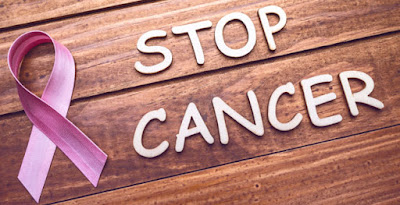Cancer of the breast is the commonest cancer in women. Generally, the core culprit causing it is oestrogen, yet is a necessary hormone that helps to maintain the female appearance.
A woman risks developing breast cancer if there is a family member such as the grandmother, mother or sister who has it. Again, women who have never breast-fed babies stand a risk because the risk tends to be higher among them.
A woman with no history of advanced pregnancy also stands a risk because progesterone tends to shield the breast from the harmful effect of oestrogen.
People who are obese or who do not engage in physical exercise are also at risk; just as those who use oral contraceptive pills, especially the ones that contain high amount of oestrogen.
Menopause also exposes a woman to breast cancer risks, while poor nutritional habits, cigarette smoking and alcohol consumption increase a woman’s risks.
Environmental factors that tend to change the genetic make-up of the individual are also a cause for concern because they can predispose their victims to breast cancer.
How To Protect Yourself From Cancer
Symptoms
Usually, there is a lump or growth. If you notice a growth on any of your breasts, take action immediately, as the growth may grow and become bigger and spread to other areas. There could be ulceration of the skin from the growth area. There could also be discharge from the nipple or bleeding.
The covering skin of the breast could be distorted and appear like orange skin. The armpit on the affected side could be involved and become swollen (lymphadenopathy). In very rare situations, the signs described above may not be so obvious until they are too late.
Male breast cancer
One per cent of breast cancers occurs in men. Swollen male breast, however, may be due to alcohol misuse and other reasons. Men should take similar precautions as women as recommended here.
Prevention
The key to it all is vigilance. A simple once-a-week self-examination of the breasts could save a life. Health professionals could teach women how to conduct this examination.
Doctors and nurses can also examine the breast from time to time. In suspicious cases and in every woman above 40 years, mammography once a year is recommended. This can be combined with sonography if required.
In women (and men with family history of prostate cancer) who have family history of breast, ovarian and pancreatic cancers, it is recommended that they have a genetic test (BRAC1 and BRAC2) done to reveal their vulnerability to breast cancer.
Treatment
Anyone, who has a breast growth or abnormal discharge should contact a qualified doctor as soon as possible for assessment.
Treatment may include surgery to remove part of or the whole of the breast or both breasts. Other treatments include radiotherapy and chemotherapy.
Cervical cancer
The cervix is the thick muscular support at the neck of the womb. The purpose of the cervix is to support the pregnancy from early loss. Containing a channel at its centre, largely, the cervix also controls what goes into the womb.
Cancer of the cervix
Cancer of the cervix is among the commonest cancers in women. The cancer is killing several women annually, yet it is preventable.
Unlike breast cancer that is common in those who are over 40, cervical cancer can hit anyone who is sexually active. Thus, to some extent, cancer of the cervix can be regarded as sexually transmitted disease.
Cancer of the uterine cervix is one of the leading causes of cancer deaths among women worldwide — second only to cancer of the breast.
The estimated new cancer cervix cases per year are 500,000, of which 79 per cent occur in the developing countries, including Nigeria.
Causes
Close to 70-90 per cent of cervical cancer are caused by viral infection called human papilloma virus.
Risk factors
This is sexually transmissible from the sexual partners. Thus, having multiple sexual partners is a risk. Direct cigarette smoking or indirect smoke inhalation from smokers is also a risk factor.
Signs and symptoms cervical cancer
The sufferer may not know of the disease until it is too late. There may be bleeding during sexual intercourse, inter-menstrual bleeding, and foul vaginal discharge.
In advanced cases, pain may occur in lower abdomen. Swelling of the abdomen may occur.
Other organs may be involved such as lung, liver and brain in the individuals where the disease has spread. Weight loss and anaemia may present itself.
Prevention
Teenage girls (and boys) can now be vaccinated against human papilloma virus from the age of 13 to under
Also, sticking to a faithful partner, though not a 100 per cent guarantees will reduce the chance of developing cancer of the cervix.
Read More Article:
10 Benefits Of Daily Exercise
How Smoking Affects Your Health




0 comments: